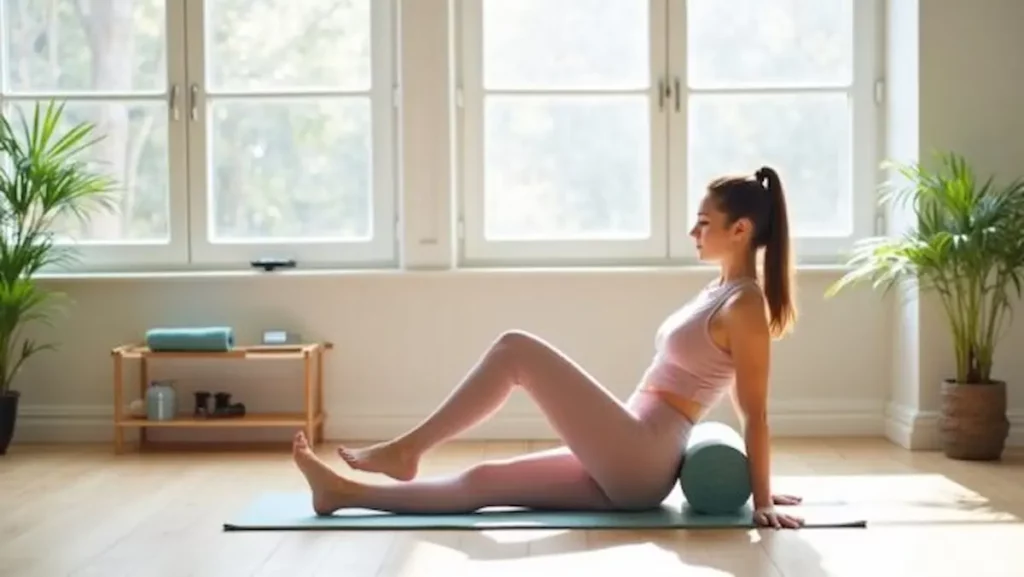
Benefits of Yoga
Gain strength, flexibility, and mental clarity through yoga—discover how this ancient practice transforms your body and mind beyond expectations.


Practicing Pilates at home isn’t just about having space—it’s about how you use it. With the right setup and a few simple moves, you can turn any room into a place for strength and balance.

The real key lies in what you focus on, how you move, and the small details that most people miss. Start small, stay consistent, and you’ll notice changes faster than you think.
Want to know which routines make the biggest difference—and how to avoid the common mistakes that hold people back? Let’s explore.
Creating an appropriate environment is essential for effective Pilates practice at home. The space should be quiet, well-ventilated, and free from distractions.
A flat, non-slip surface ensures safety and stability during exercises. Adequate lighting helps maintain focus, while enough room allows for full movement.
Maintaining cleanliness promotes hygiene and comfort throughout the Pilates session.
Proper equipment enhances the effectiveness and safety of Pilates performed at home.
A quality Pilates mat provides necessary cushioning and grip. Resistance bands and small Pilates balls add variety and challenge.
Optional props like a Pilates ring or foam roller support targeted exercises. Minimal equipment suffices, focusing on essentials to maintain comfort and functionality during workouts.
While having the right equipment supports Pilates practice at home, understanding its core principles is equally important for effective execution.
These include concentration, control, centering, flow, precision, and breathing. Mastery of these concepts ensures movements are purposeful and safe, enhancing body awareness and promoting balanced strength.
Adhering to these principles forms the foundation of a successful home Pilates routine.
Starting with beginner Pilates exercises helps establish a solid foundation and builds confidence for those new to the practice.
Common exercises include the hundred, pelvic curl, and spine stretch. These movements focus on core engagement, spinal articulation, and controlled breathing.
Performing them consistently improves posture, flexibility, and overall body awareness, essential for progressing safely in Pilates at home.
Alongside mastering beginner Pilates exercises, understanding breathing techniques significantly enhances the effectiveness of the practice.
Proper breathing involves deep, controlled inhales through the nose and exhales through the mouth, synchronizing with movement. This method increases oxygen flow, supports core engagement, and improves focus, facilitating greater control and stability during exercises.
This is essential for maximizing Pilates benefits at home.
Establishing a structured Pilates routine at home requires careful planning to ensure consistency and progression.
Selecting exercises that target different muscle groups, setting a fixed schedule, and gradually increasing difficulty are essential steps.
Incorporating warm-up and cool-down phases enhances safety.
Tracking progress helps maintain motivation and adjust the routine effectively, promoting balanced strength and flexibility development over time.
Though practicing Pilates at home offers flexibility, it also presents challenges that can hinder progress if common mistakes are not recognized and corrected.
Neglecting proper form, rushing through exercises, and skipping warm-ups compromise effectiveness and increase injury risk.
Additionally, inconsistent practice and poor breath control reduce benefits.
Awareness and mindful correction of these errors ensure safer, more productive Pilates sessions at home.
How can one maintain enthusiasm when practicing Pilates at home without external guidance? Setting clear goals and scheduling regular sessions helps sustain commitment.
Tracking progress through journals or apps provides measurable feedback, reinforcing improvement.
Incorporating variety in routines prevents boredom, while celebrating milestones boosts motivation.
Consistent self-assessment ensures alignment with personal fitness objectives and encourages continued practice.
Practicing Pilates at home offers a convenient way to improve strength, flexibility, and mindfulness. By setting up a dedicated space, using essential equipment, and focusing on proper technique and breathing, beginners can safely develop their practice. Consistency and attention to form help prevent injury and maximize benefits. Avoiding common mistakes and tracking progress support long-term motivation. With patience and dedication, home Pilates can become a rewarding part of a healthy lifestyle.

Gain strength, flexibility, and mental clarity through yoga—discover how this ancient practice transforms your body and mind beyond expectations.

How cardio timing impacts your strength gains and fat loss might surprise you—discover the best order to maximize your workouts today.

Jumpstart your fitness journey with essential tips on how to start running safely and effectively—discover what you need to know before you begin.

Why running boosts both your body and mind in surprising ways—discover benefits that go beyond fitness and transform your life.

Offering more than just muscle growth, resistance training transforms your fitness—but what exactly makes it so effective? Discover the key principles inside.

Only by understanding lean mass can you unlock its crucial role in health and fitness—discover what it truly means for your body’s strength and vitality.